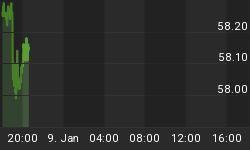Of course the Gold Price is manipulated, that's the point!
By the beginning of the 1960s, the U.S.$ 35 = 1 oz. Gold price was becoming more and more difficult to sustain. Gold demand was rising and U.S. Gold reserves were falling, both as a result of the ever increasing trade deficits which the U.S. continued to run with the rest of the world.
Shortly after President Kennedy was Inaugurated in January 1961, and to combat this situation, newly-appointed Undersecretary of the Treasury Robert Roosa suggested that the U.S. and Europe should pool their Gold resources to prevent the private market price for Gold from exceeding the mandated rate of U.S.$ 35 per ounce. Acting on this suggestion, the Central Banks of the U.S., Britain, West Germany, France, Switzerland, Italy, Belgium, the Netherlands, and Luxembourg set up the "London Gold Pool" in early 1961. One wonders why they were so cooperative with the U.S. Granted the gold that left these nations ahead of the war was still in the U.S. and slowly but surely they felt it necessary to get it back. What happened in occupied Europe was that U.S. dollars became more abundant there and a market in 'Eurodollars' sprang up derived in part from U.S. soldiers still in Europe. But the volumes grew more and more as the U.S. established a perpetual Trade deficit feeding the rest of the world with them.
The 'Pool' came apart as Europe, under Charles de Gaulle, decided enough was enough and began to send the Dollars earned by Europe back to the U.S. back and exchanged these for their gold. Then they were unwilling to continue accepting U.S. Treasury Bills & Bonds in return. Under the terms of the 'Bretton Woods Agreement' signed in 1944, Europe was legally entitled to do this. It would appear that by the time the gold sent to the U.S. before the war had returned to Europe, the U.S. pulled the plug on exchanging gold for dollars letting the London Gold Pool fold in April 1968. But the demand for gold from Europe did not abate.
By the end of the 1960s, the U.S. once again, [see 1935 dollar devaluation against gold] faced the stark choice of eliminating their trade deficits or revaluing the Dollar downwards against Gold to reflect the actual situation.
President Nixon decided to do neither. Instead, he repudiated the international obligation of the U.S. to redeem its Dollar in Gold just as President Roosevelt had repudiated the domestic obligation in 1933. On August 15, 1971, President Nixon closed the "Gold Window".
In other words the U.S. defaulted on its agreement with Europe and once again Europe tolerated it. We have to ask why? How could a currency with, what was to become perpetually undermined by being printed and exported, continue to stand and become the world's sole reserve currency and not collapse?
Military might, might add some pressure, but not among the allies. No, the key lay in the then established fact that you could only buy oil with U.S. dollars. Nearly everything modern needed oil to work. Most nation's import bills comprised 25%+ of oil. The U.S. controlled O.P.E.C. and provided their political and military security. In turn the U.S. had a firm grip on all their allies and secured their financial 'empire'.

The last link between Gold and the Dollar was gone. The result was inevitable. One of the prices paid by the U.S. was to permit the oil producers to 'nationalize' their oilfield, production and the U.S. and British companies that ran them, the 'seven sisters'. The oil price began to run up from $8 a barrel to $35 a barrel vastly increasing the demand for dollars and U.S. dollar liquidity. The U.S. in turn permitted this provided the oil producers reinvested the capital they earned into the U.S. Treasury market and U.S. equities and U.S. products [including military hardware]. They were allowed to keep the interest income in their own hands under these conditions. This prevented the oil producers posing any financial challenge to the U.S.
The Persian Gulf was defined as part of the U.S.' 'vital interests', as a result. So if the allies in Europe wanted their economies to function properly they had to accept this fact. Quietly they accepted more and more U.S. dollars into their foreign exchange reserves.
As the oil price rose the pressure on all currencies climbed too. In February 1973, the world's currencies were "floated". They were allowed to move to levels that reflected the state of their Balance of Payments. The U.S. was excused all such value measurements because it was so needed by all.
By the end of 1974, Gold had soared from $35 to $195 an ounce in an almost mathematically neat progression. This did not make the U.S. happy at all, as it highlighted the real weakening of the U.S. dollar and the sagacious investor was fully aware of this.
So a war on gold was begun. This was not just manipulation but a transparent bullying attack on real money. At first the tactics used underestimated the power of gold and the trust placed in it.
Nevertheless the common theme to this manipulation was to suppress the gold price.
For more information on how to safely [not simply overseas where it is still vulnerable] Enquire & Subscribe @ www.GoldForecaster.com or www.SilverForecaster.com
Enquire @ admin@StockbridgeMgMt.com















